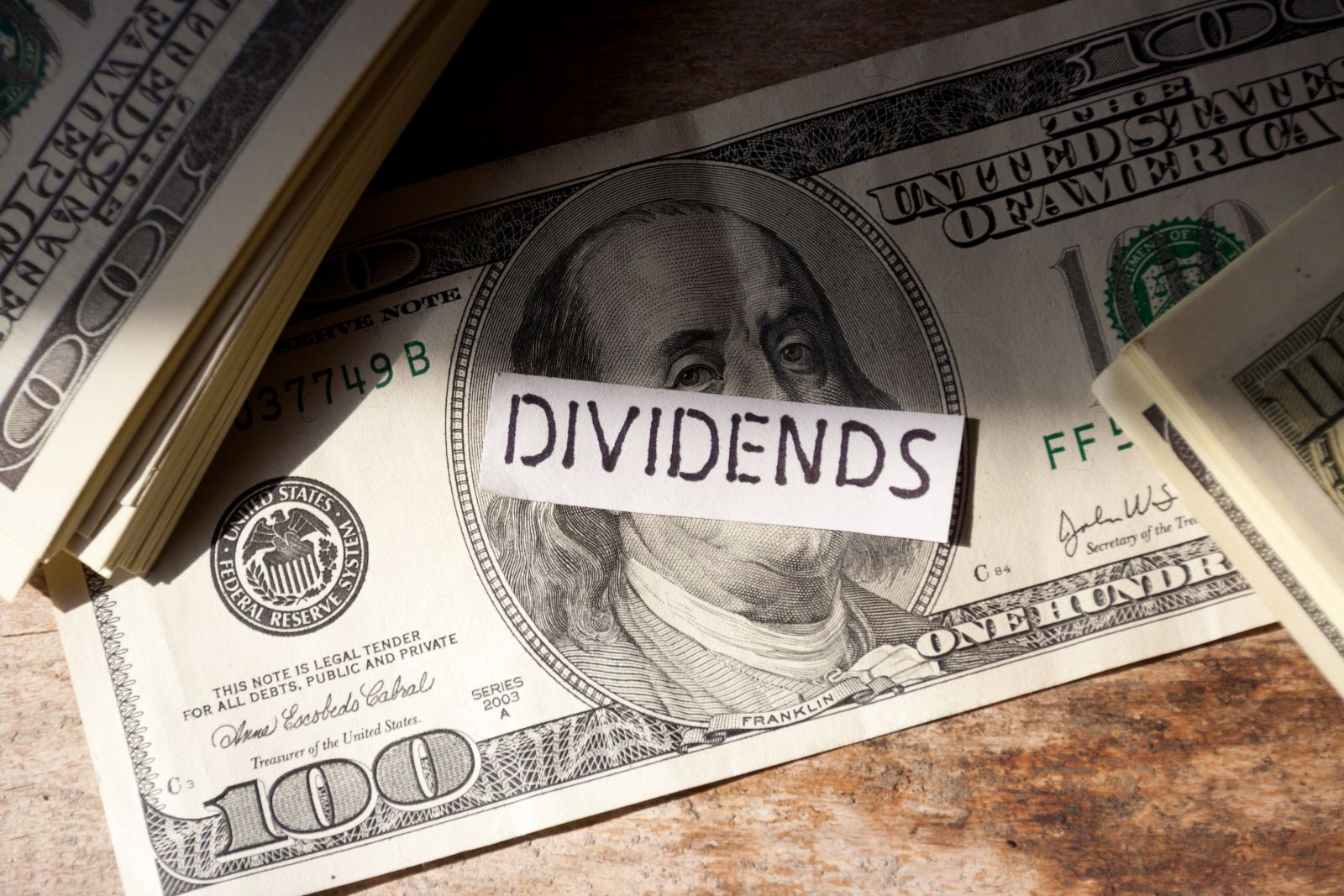
Dividend-paying stocks have always had a steady following on Wall Street. Risk-averse investors looking for a reliable stream of income have found these stocks attractive over the years. Additionally, dividend-paying companies are primarily those that boast a robust earnings base, supported by durable business models and well-established footprints in their respective industries.
With the latest jobs data suggesting a potential cooling in the labor market, investors are looking ahead to potential Fed rate cuts later this year. That would be good news for dividend-paying stocks, as lower bond yields due to rate cuts would leave investors looking elsewhere for yield.
Against this backdrop, here are three quality dividend-paying growth stocks that investors might want to consider at current levels.
#1. Nike
Founded in 1964, Nike (NKE) is one of the most popular athleisure brands in the world. It designs, manufactures, and markets footwear, apparel, equipment, accessories, and services worldwide. The company currently commands a massive market cap of $142.9 billion.
Nike stock is down 13% on a YTD basis.

The stock offers a dividend yield of 1.56%, paid quarterly at a rate of $0.37 per share. Notably, the company has been raising dividends for more than a decade now. With a payout ratio of 38%, Nike's dividends are well-covered by earnings, leaving room for further growth.
In its fiscal Q3, reported in March, Nike beat estimates on both revenue and earnings. The company reported revenues of $12.4 billion, almost unchanged from the prior year, while adjusted EPS arrived at $0.98, surpassing the consensus estimate of $0.69. Notably, over the past five quarters, Nike's EPS have missed expectations on only one occasion.
Over the past 10 years, Nike's revenue and EPS have grown at a CAGR of 6.66% and 6.92%, respectively.
Nike dominates the athletic wear space, boasting a global share of more than 27% of the footwear market. To deliver their products to customers, Nike utilizes a diversified sales strategy. They operate over 1,000 of their stores, contributing 20% of total sales. Additionally, their innovative NIKE Brand Digital platform captures a significant portion of sales at 24%. Rounding out their distribution network, partnerships with wholesale businesses account for the remaining 56% of sales.
The company recently showcased its new collection of 13 AI-generated A.I.R. footwear designs ahead of the Olympic Games in Paris, which features a marketing blitz that the brand hopes to be a game-changer for rising competition from brands like Hoka. Later this year, Nike will hold its Investor Day, where the company will lay out its plans for the next five years.
Analysts have deemed Nike stock a “Moderate Buy,” with a mean target price of $114.19. This indicates an upside potential of about 21.4% from current levels. Out of 29 analysts covering the stock, 17 have a “Strong Buy” rating, 2 have a “Moderate Buy” rating, 9 have a “Hold” rating, and 1 has a “Strong Sell” rating.

#2. Gilead Sciences
Founded in 1987 and based out of Foster City, Calif., Gilead Sciences (GILD) is a biopharmaceutical company that develops, researches, and commercializes drugs, primarily focused on treating life-threatening infectious diseases. Their core business revolves around HIV and Hepatitis B & C therapies. Its market cap currently stands at about $79 billion.
Gilead stock is down 20.9% on a YTD basis. The company offers a dividend yield of 4.80%, backed by 8 consecutive years of growth.

Losses narrowed in the first quarter to $1.32 per share from $1.37 per share in the previous year. The figure also came in narrower than the consensus estimate for a loss of $1.49 per share. Revenues went up by 5.3% on a YoY basis to $6.69 billion, which also beat estimates.
As of March 31, Gilead had $4.7 billion of cash, cash equivalents and marketable debt securities, down from $8.4 billion as of Dec. 31. The company generated $2.2 billion in operating cash flow during the first quarter, and paid $990 million in dividends, along with $400 million in share repurchases.
Gilead's array of innovative drugs, including Biktarvy, Vemlidy, Tecartus, Yescarta, and Trodelvy, give it a strong footing for future growth. Biktarvy, a medicine that is used to treat certain patients with HIV, reported total sales of $2.95 billion in Q1, up 10% from the previous year. Notably, in February 2024, the FDA approved Biktarvy for the treatment of patients with HIV who have suppressed viral loads with known/suspected resistance to M184V/I mutation.
Additionally, Trodelvy is also expected to play a crucial role in increasing the company's revenues in the future. Trodelvy is an antibody-drug conjugate (ADC) that helps in preventing the replication and division of cancer cells. Currently, Trodelvy is approved by the FDA for the treatment of certain patients with breast cancer and urothelial cancer.
The two dozen analysts tracking GILD have an average rating of “Moderate Buy” for the stock, with a mean target price of $82.55. This suggests an expected upside potential of roughly 28.8% from current levels. Out of 24 analysts covering Gilead stock, 10 have a “Strong Buy” rating and 14 have a “Hold” rating.

#3. Greenbrier Companies
Formed in 1981 through the merger of Greenbrier Leasing Corporation and James-Furman & Company, Greenbrier Companies (GBX) is a global leader in transportation, manufacturing and freight services. Their core business focuses on railcar manufacturing and leasing and repair services. Its market cap is currently $1.67 billion.
GBX stock is up 20.4% on a YTD basis. The stock offers a dividend yield of 2.24%, which is above the industrial sector median of 1.48%. The company has a payout ratio of 28.25%, which means there's still ample room for continued dividend growth in the coming years.

Greenbrier's results for the fiscal second quarter were highlighted by both revenue and earnings surpassing estimates. Revenues for the quarter came in at $862.7 million, down by 23.1% from the previous year. EPS rose by 6.2% to come in at $1.03, comfortably surpassing the consensus estimate for $0.86. Over the past five quarters, the company's EPS has missed expectations only once.
Over the past 10 years, the company has reported revenue and earnings growth at a CAGR of 6.91% and 27.05%, respectively.
Greenbrier's leasing segment delivered particularly impressive growth in fiscal Q2, expanding its fleet by 500 units to a total of 14,600 units. This growth is further bolstered by a near-perfect utilization rate of nearly 99%. Additionally, the company secured a robust 5,900 new railcar orders valued at nearly $690 million.
The company delivered 5,600 units during the quarter, resulting in a significant new railcar backlog of 29,200 units with an estimated value of $3.6 billion. This substantial backlog provides strong revenue visibility for Greenbrier moving forward.
Overall, analysts have an average rating of “Moderate Buy” for the stock, with a mean target price of $60, which indicates an upside potential of about 13.2% from current levels. Out of 5 analysts covering the stock, 3 have a “Strong Buy” rating, 1 has a “Hold” rating, and 1 has a “Moderate Sell” rating.








